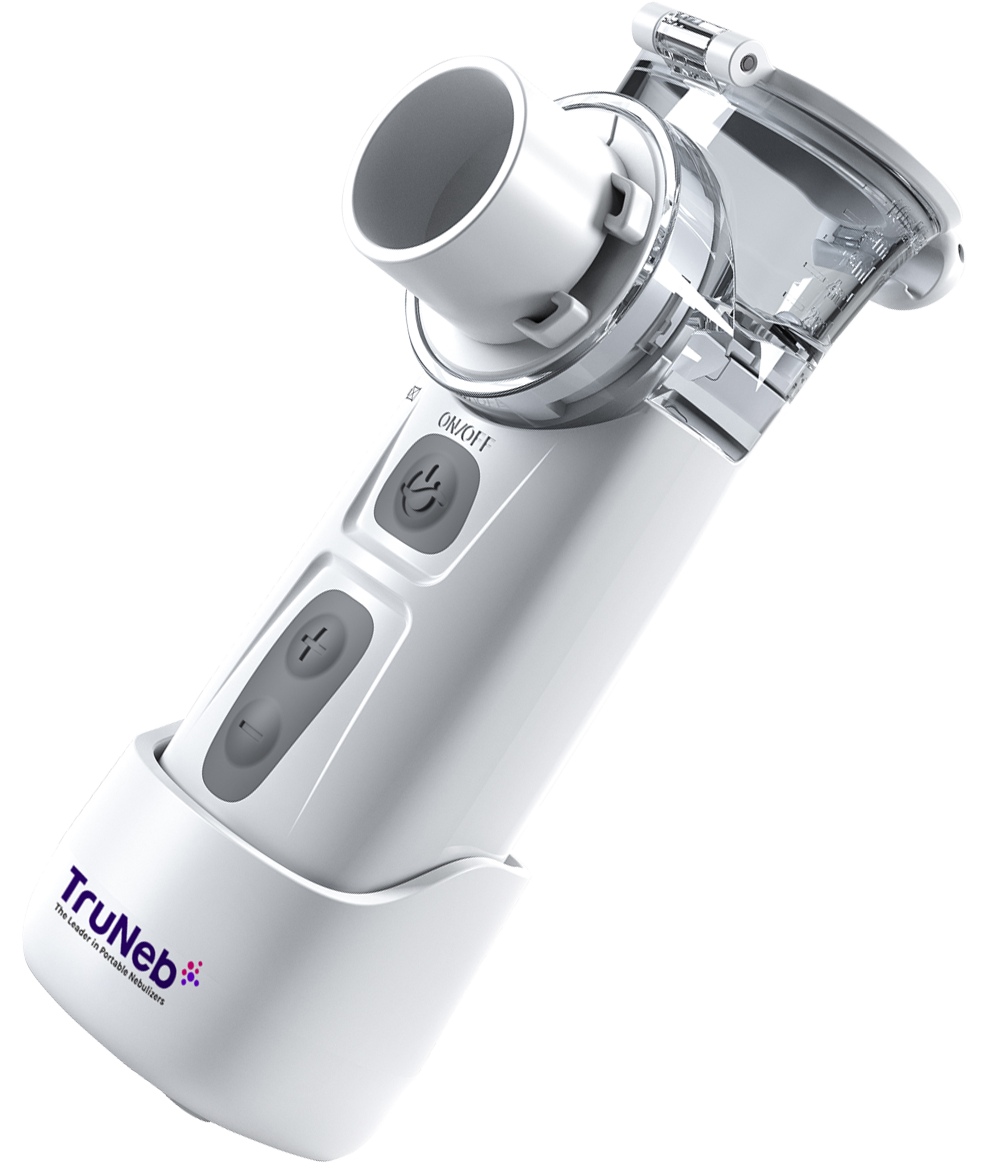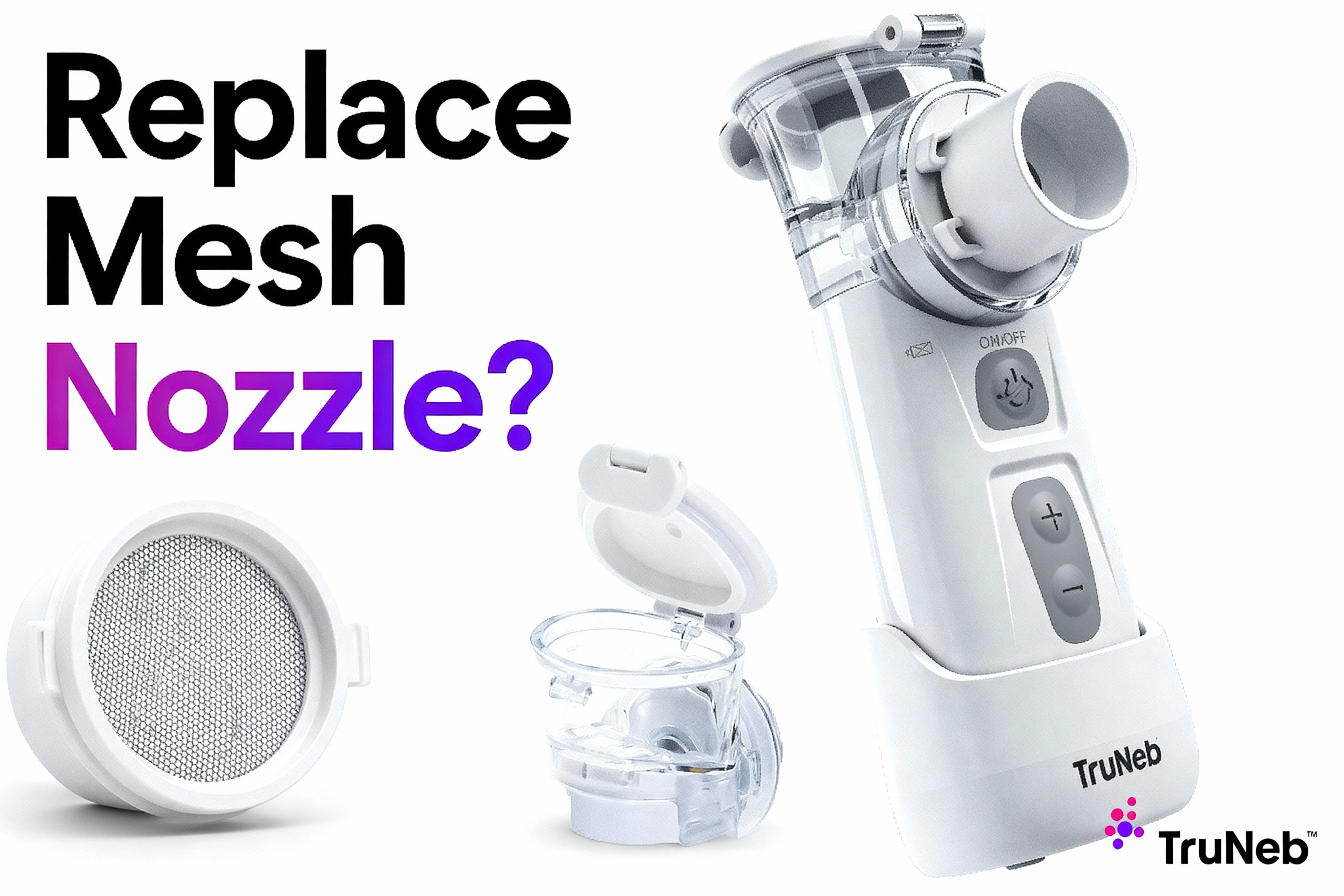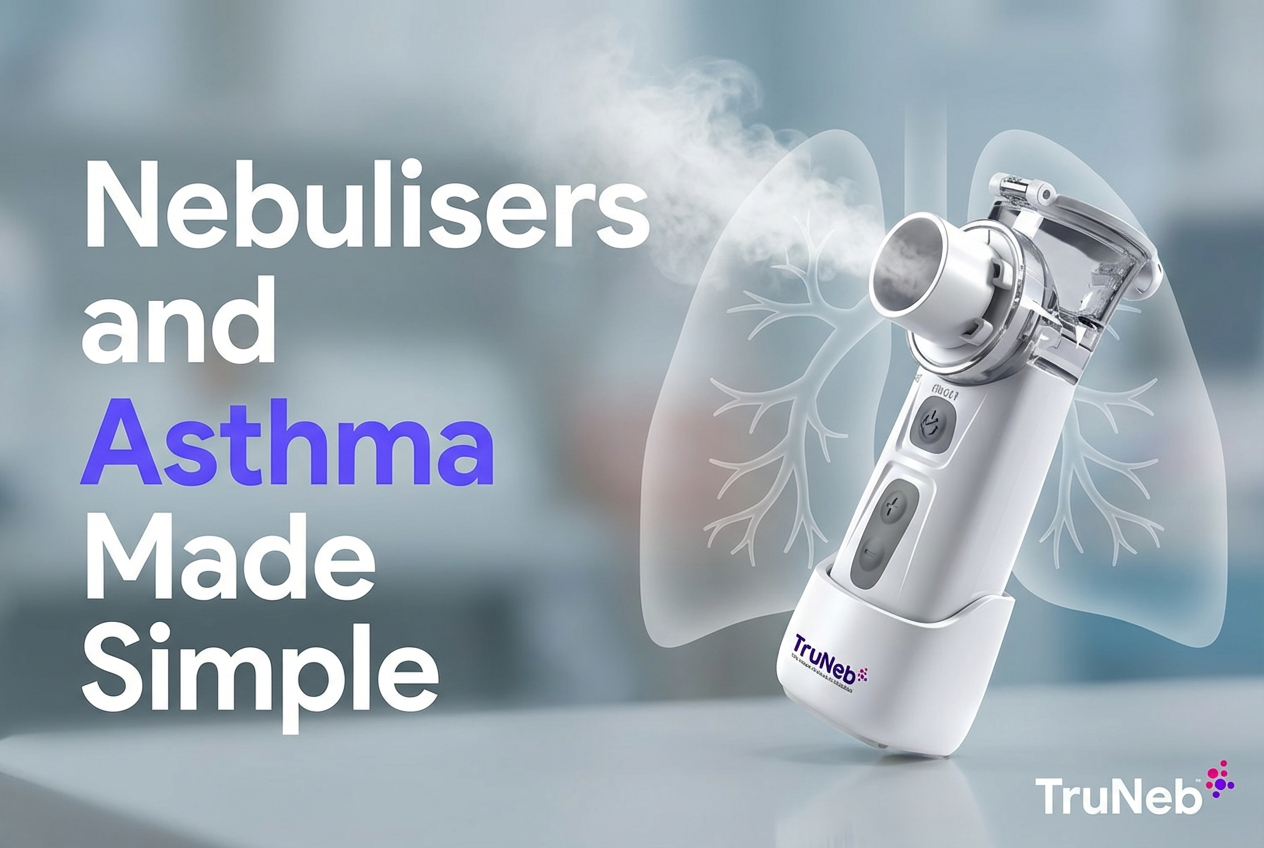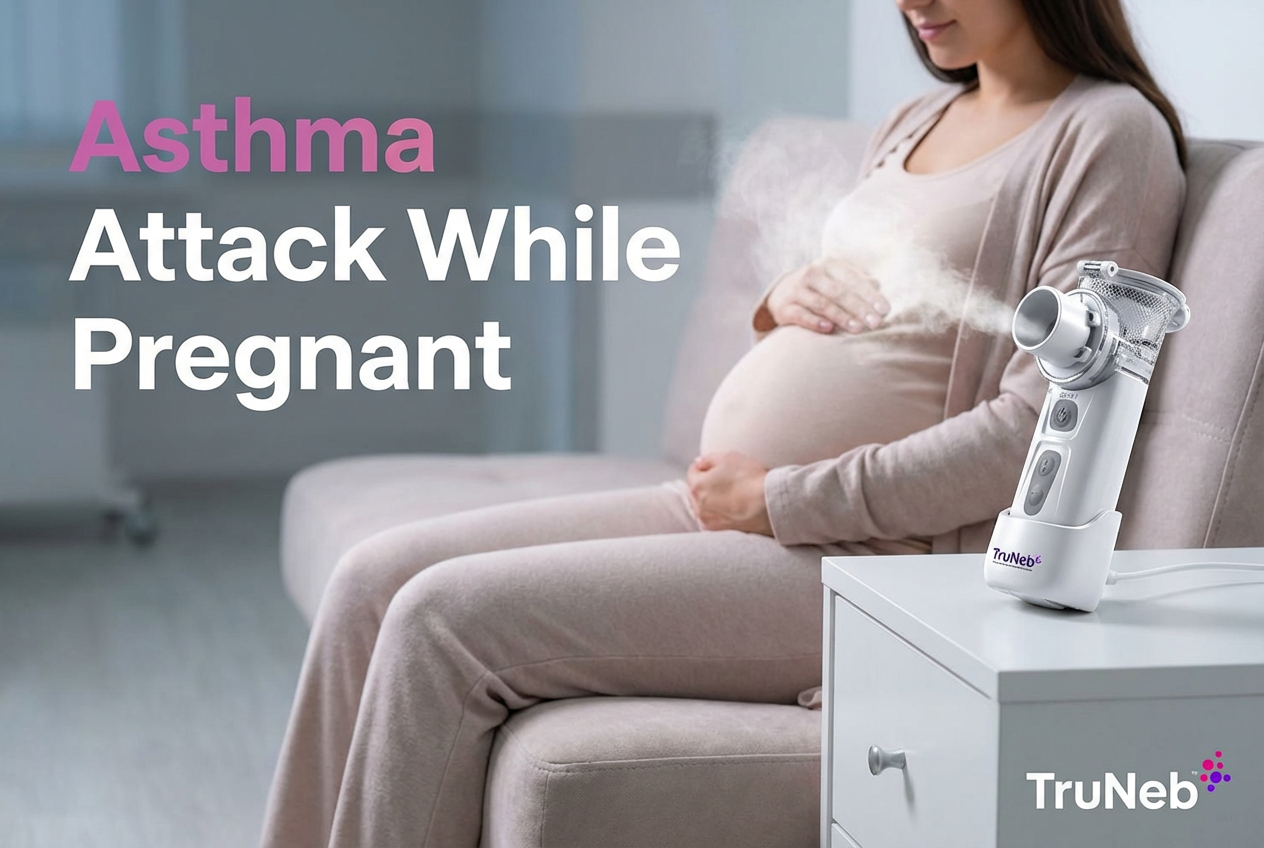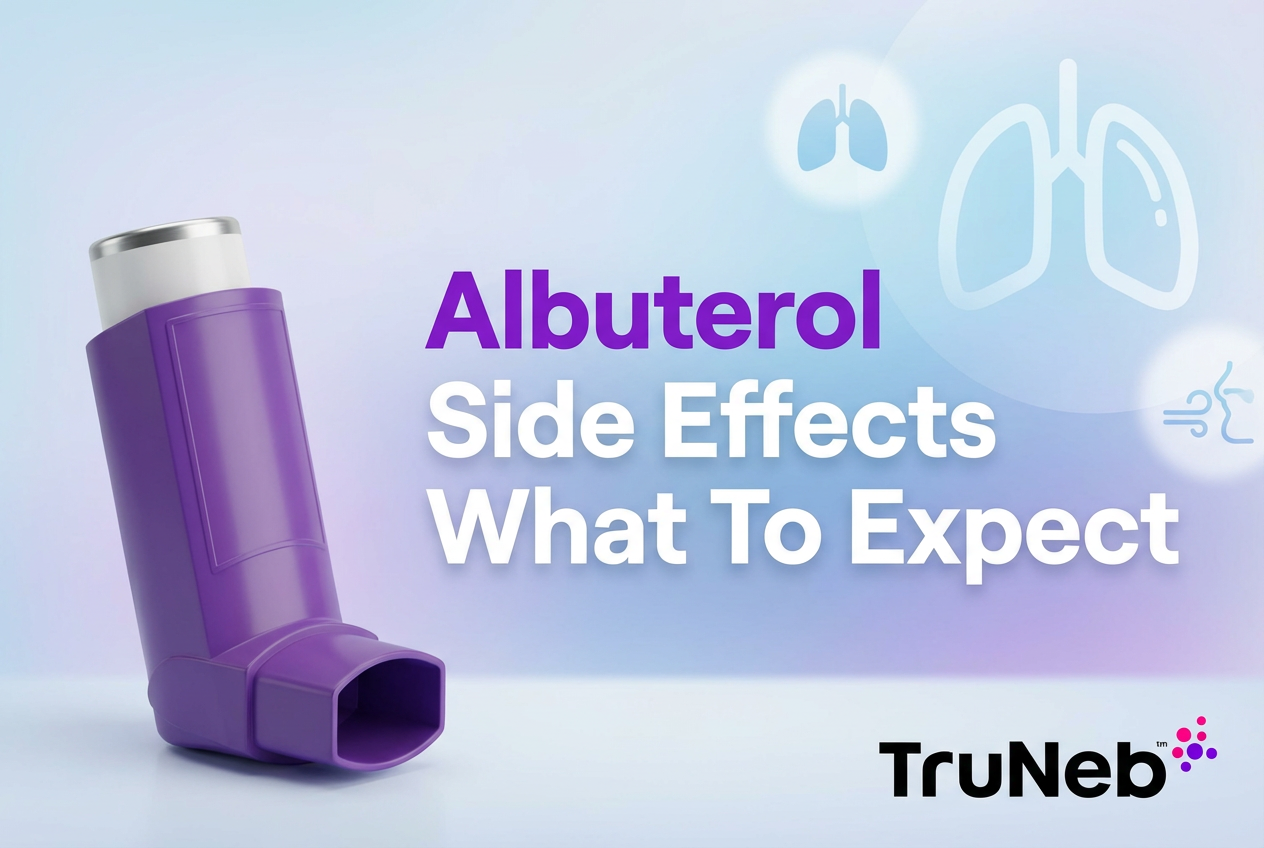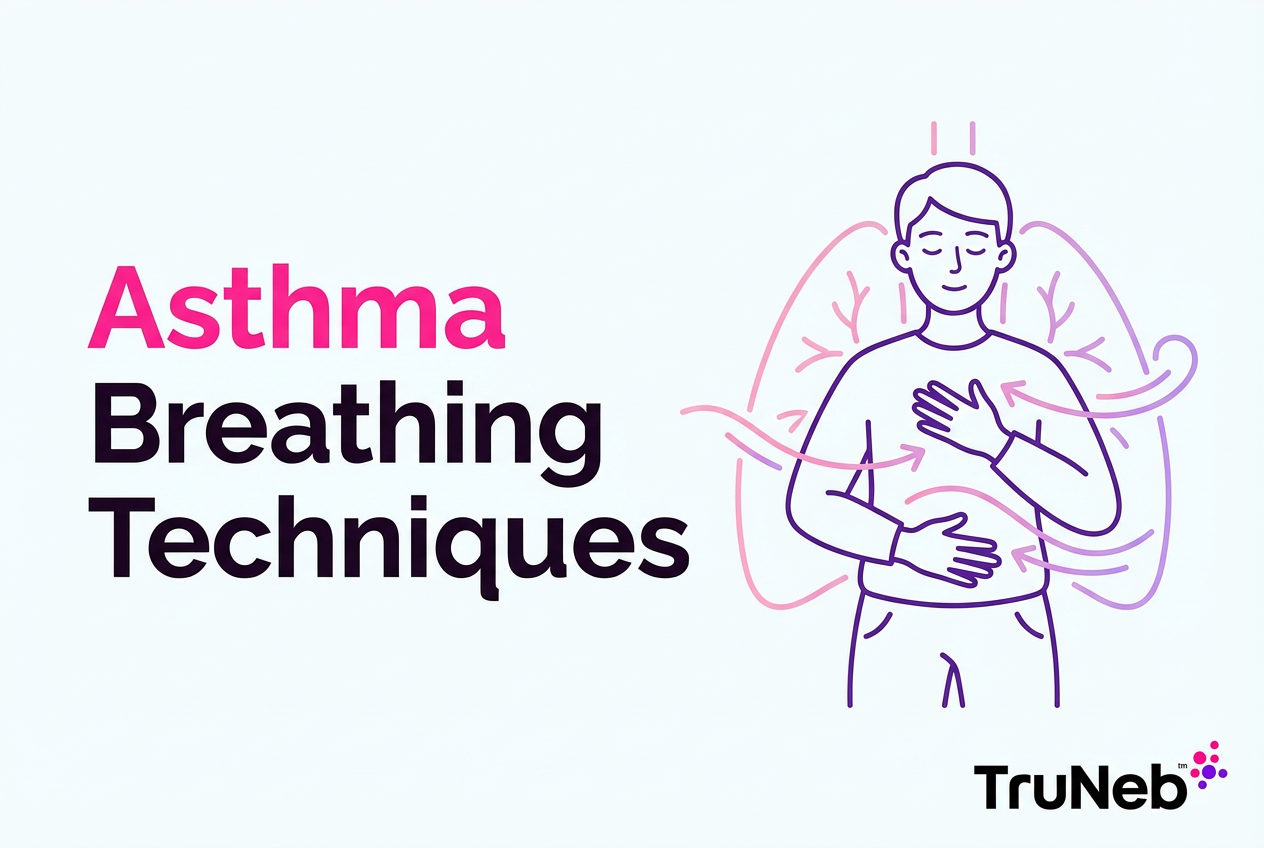On this page
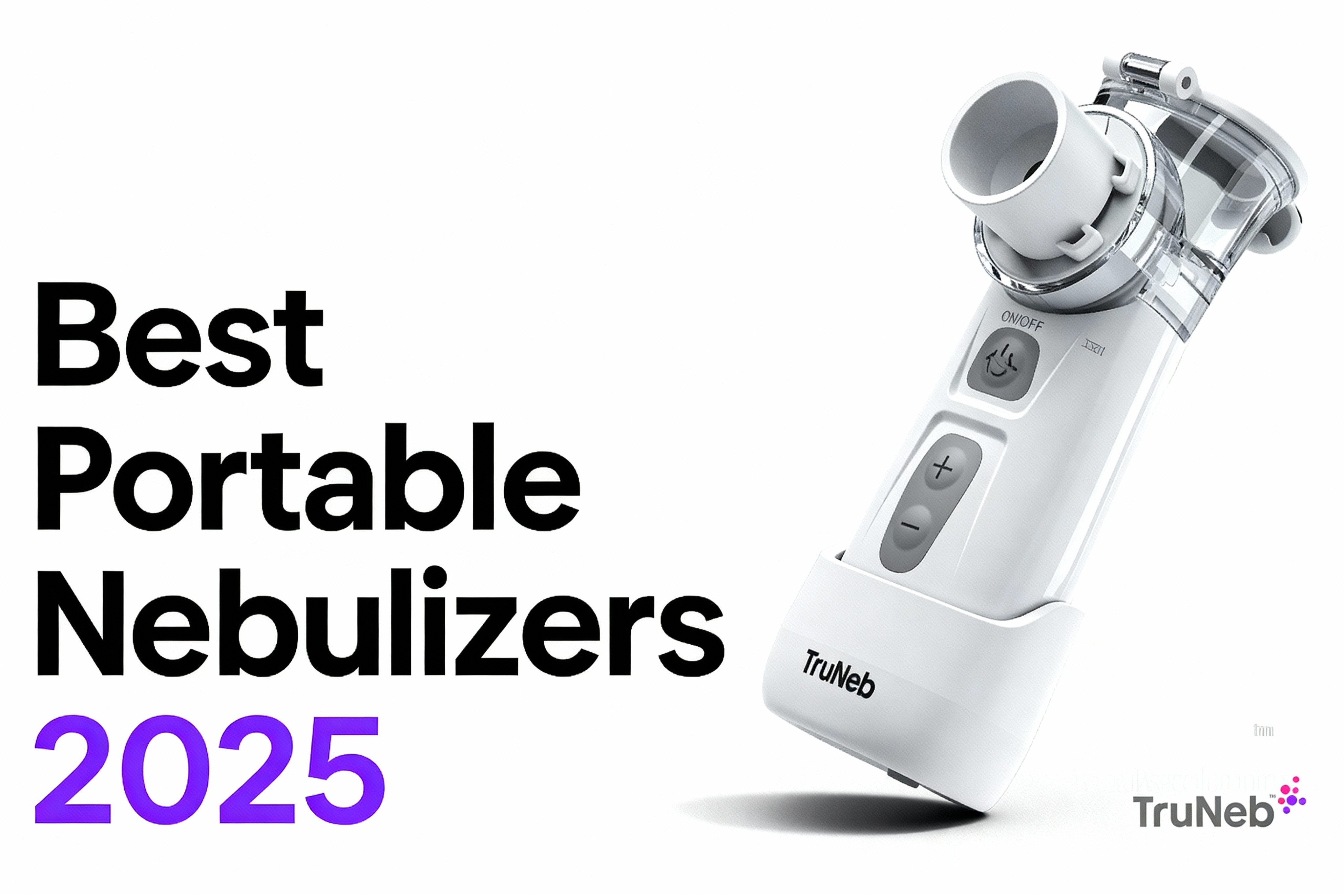
What Is a Portable Nebulizer and Who Needs One?
A portable nebulizer is a small handheld machine that turns liquid medicine into a fine mist you breathe in. It helps medicine reach deep into your lungs without special timing or coordination.
Check out the TruNeb Portable Nebulizer HERE

People with asthma, COPD, or chronic bronchitis use a portable nebulizer to take treatments at work, school, or while traveling. It’s also helpful for kids or anyone who struggles to use an inhaler during a flare.
One-liner: A portable nebulizer is a pocket-sized device that delivers medicine as an easy-to-breathe mist.
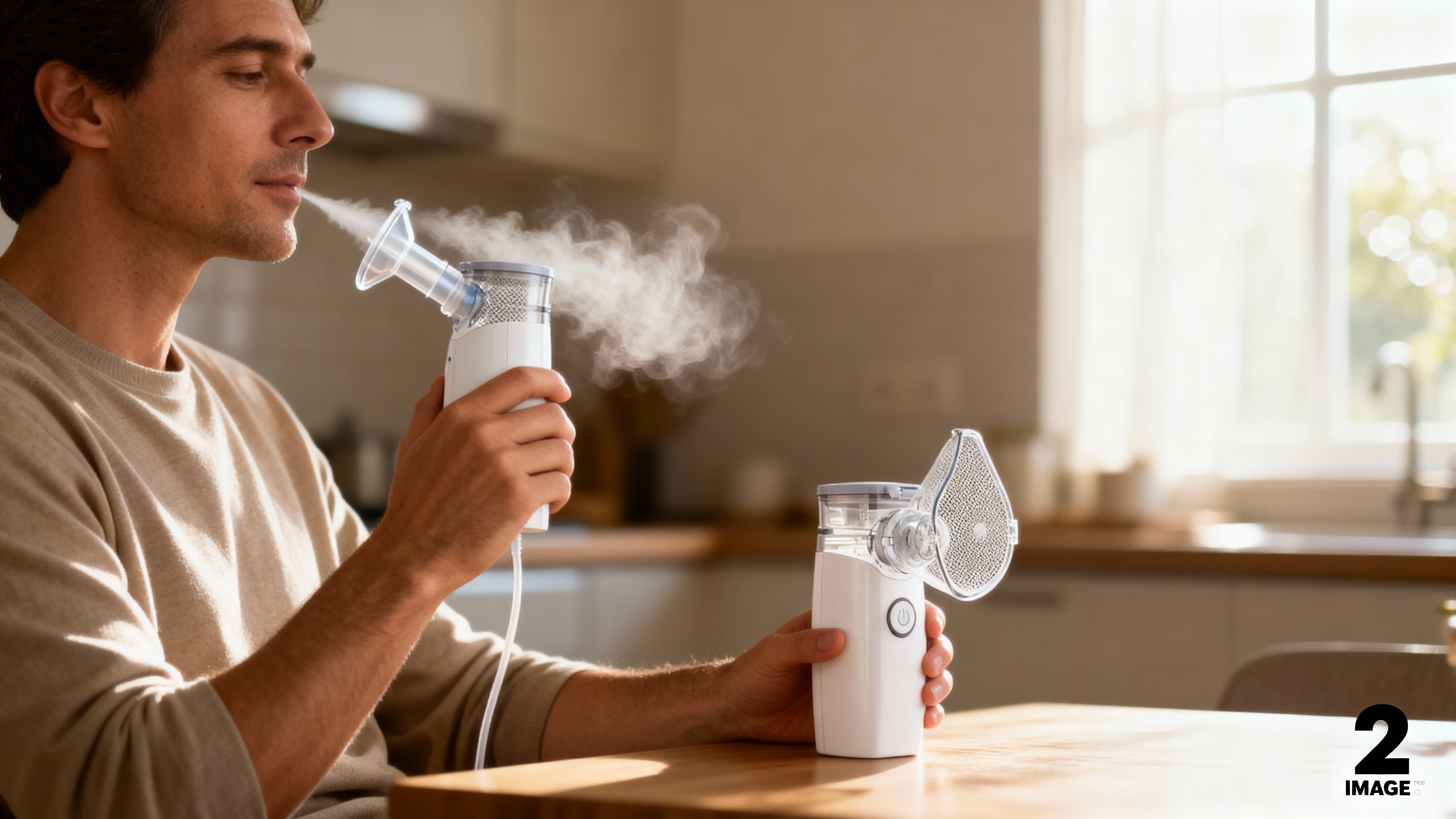
How to Choose the Best Portable Nebulizer (Key Criteria)
Picking the right handheld nebulizer is easier when you focus on a few key details:
- Type: Mesh units are very compact and quiet. Compressor (jet) units are a bit larger but work with a wide range of medicines. Ultrasonic units are quiet and fast but aren’t compatible with every medication.
- Portable vs tabletop: Portable units are small and battery-powered for on-the-go use. Tabletop compressors are bigger, plug-in, and can be louder but handle a wider range of meds and longer sessions at home.
- Portability: Check size and weight. If you travel frequently, look for a pocketable model that fits in a small bag.
- Power: Rechargeable USB batteries are convenient. Some units use AA batteries or include car/AC adapters for longer trips.
- Performance: Look for fine mist output (usually listed as MMAD in microns, ~1–5 µm helps medicine reach lower airways).
- Noise: Quiet devices help with nighttime use and kids.
- Ease of cleaning: Fewer parts and clear cleaning steps save time. Consistent cleaning keeps performance strong.
- Medication fit: Most portables handle albuterol and saline well. Check device guidance if you use thicker solutions.
- Steam inhalers ≠ nebulizers: Boxes labeled “steam inhaler” are NOT for breathing prescription nebulizer medications.
Rule of thumb: For travel, pick a lightweight, quiet, rechargeable mesh device that works with your medication.
| Nebulizer type | Portability | Noise | Medication flexibility* | Power options |
|---|---|---|---|---|
| Mesh | Pocket-size | Very quiet | Albuterol & saline; some limits with suspensions | USB rechargeable |
| Compressor (Jet) | Small bag-size | Louder | Broad range, including many suspensions | AC, car adapter; some battery packs |
| Ultrasonic | Small to mid-size | Quiet | Not ideal for some suspensions; check manual | Rechargeable or AC |
*Always confirm medication compatibility in your device manual.
Top 7 Best Portable Nebulizers of 2025 (Our Picks)
We chose these picks based on size, noise, power, ease of cleaning, and everyday reliability. Each “best for” label helps you quickly match a device to your needs.
1) TruNeb™ Portable Mesh Nebulizer — Best Rechargeable Everyday Pick
$147.18

A compact mesh unit designed for daily use at home, work, or travel. It runs quietly, fits easily in a pocket or small bag, and is simple to clean with minimal parts. USB recharging keeps it ready without hunting for disposable batteries.
- Why it stands out: Quiet, lightweight, rechargeable, and easy to use.
- Good fit for: Albuterol and saline treatments, day-to-day routines, and discreet use.
- Consider: Smaller cup sizes on portable units can require a second fill for larger volumes. Replacement mesh parts need periodic replacement per the manual.
2) Omron MicroAir U100 — Best Overall Handheld Reliability
$163.99

A well-known mesh handheld with a reputation for consistent performance. It’s compact and travel-ready. Some users like the flexibility of AA batteries on long days away from outlets.
- Why it stands out: Trusted brand, steady mist output, travel-friendly power options.
- Good fit for: Frequent travelers and anyone who values proven reliability.
- Consider: Swapping AA batteries vs. using USB recharge is a personal preference.
3) Philips InnoSpire Go — Best for Quick, Simple Treatments
DISCONTINUED

A streamlined mesh design with simple assembly and a fast, efficient mist. The layout is intuitive, which helps on busy mornings or nighttime routines.
- Why it stands out: Simple setup, efficient sessions, quiet use.
- Good fit for: Fast treatments and minimal fuss.
- Consider: Availability varies; check current stock and parts. Replacement parts and accessories vary by retailer.
4) PARI Trek S (Portable Compressor) — Best for Long-Term Heavy Use
$189.00

A compact compressor system built for frequent treatments and broad medication compatibility. It’s a small bag device rather than pocket-size, but it’s sturdy and dependable.
- Why it stands out: Robust build and medication flexibility.
- Good fit for: People who nebulize multiple times a day and want compressor power on the go.
- Consider: Louder than mesh and not pocketable.
5) DeVilbiss Traveler — Best for Road Trips and Car Power
$115.00

A travel-focused compressor unit that pairs well with car adapters for long drives. Reliable airflow supports efficient sessions.
- Why it stands out: Road-trip friendly power accessories and steady delivery.
- Good fit for: Camping, driving, and extended travel days.
- Consider: Louder than mesh and larger footprint.
6) Flyp Portable Nebulizer — Best Ultra-Portable Pocket Size
$199.99

A very slim design that slips into a pocket for quick access. Quiet operation and rechargeable power make it easy to carry and use.
Why it stands out: Pocket-size form factor.
- Good fit for: Minimal carry weight and discreet use.
- Consider: Smaller reservoirs need careful cleaning and can need refills for higher volumes. Verify current availability and warranty support.
7) Kid-Friendly Portable Setup — Best for Children’s Comfort
$49.78

A quiet mesh handheld paired with a child-size mask helps kids relax during treatments. Example: a mesh handheld bundled with child-size masks. Simple, one-button operation and fast sessions can make a big difference.
- Why it stands out: Quiet, gentle mist and kid-ready fit.
- Good fit for: Toddlers and school-age kids.
- Consider: Always supervise and follow your pediatrician’s guidance.
One-liner: Choose the “best” nebulizer by matching power, size, and noise to your daily life—not just the brand name.
Tips for Using and Maintaining Your Portable Nebulizer
- Before you start: General steps in most manuals include sitting upright, loading the prescribed solution, attaching the mouthpiece or mask, and breathing slowly until the mist stops. Follow your device instructions and your doctor’s guidance.
- Daily cleaning: After each use, rinse the medicine cup and mouthpiece with warm water. Let parts air-dry fully.
- Weekly care: Wash parts with mild soap, rinse well, and let them dry completely. Follow your device’s guide for any deeper disinfection steps.
- Mesh care: If you use saline, rinse right after use to reduce salt build-up on the mesh.
- Power & parts: Keep the battery charged. Replace masks, mouthpieces, or filters as recommended in your manual.
- Travel tips: Pack your nebulizer and medication in your carry-on. TSA allows nebulizers and meds in carry-ons; keep medicines in original labeled vials. Place lithium batteries in carry-on (not checked). A doctor’s note can help for international travel. Bring extra doses, a charger or spare batteries, and a small zip bag for clean parts. TSA
One-liner: Clean parts, dry fully, and keep spares handy so your nebulizer works well when you need it.
Medication Compatibility and Nebulizer Solutions
Most portable nebulizers handle common bronchodilators like albuterol and standard saline well. Mesh and compressor units are widely used for these treatments.
- Albuterol: A go-to rescue medicine for people with asthma. Portable mesh devices and compact compressors can deliver a steady, fine mist to help open airways.
- Hypertonic saline: Commonly used for mucus clearance in conditions like cystic fibrosis or bronchiectasis. Options include 3% hypertonic saline and 7% hypertonic saline. Rinse after use to help prevent salt build-up on mesh parts.
- Budesonide (Pulmicort): A steroid suspension typically delivered via compressor or a compatible mesh device. Ultrasonic units can be incompatible with suspensions; check your device manual.
- Ipratropium: Another bronchodilator commonly used with portable mesh or compressor units; confirm compatibility in your device guide.
Key idea: The best portable nebulizer for albuterol is one that delivers a fine, steady mist and fits your routine so you actually use it.
Most portable mesh and compressor nebulizers work well with albuterol; always check your device guide for other solutions.
Safety note: Talk to your doctor before trying a new medication or changing your treatment plan.
Safety Note
- Medical disclaimer: Talk to your doctor before trying a new medication. Do not start, stop, or change a prescription without medical guidance.
- Usage reminder: Follow the instructions that come with your device and your prescription label.
- Hygiene matters: Regular cleaning helps prevent germs and keeps the mist flow steady.
- Emergency warning: ⚠️ Seek emergency care if you have severe breathing trouble, blue/gray lips, chest pain, or if symptoms don’t improve with rescue treatment.
- When to call your doctor: Talk to your doctor if your symptoms aren’t improving or if you’re considering changing your treatment.
This article is informational only and isn’t a substitute for medical advice.
Frequently Asked Questions
Tap or click a question below to see the answer:
In the U.S., you can purchase the device without a prescription, but the medications (like albuterol) usually require one. Insurance coverage often needs a doctor’s order.
An inhaler gives quick puffs and requires timing your breath. A nebulizer makes a steady mist you breathe normally over several minutes. Neither is universally “better”; many people use both for different situations.
Rinse after each use and do a soapy wash weekly. Replace masks, mouthpieces, or filters on the schedule in your device manual or when they show wear.
It varies by model and battery size. People typically plan for several sessions per full charge and keep a charger or spare batteries in their bag.
Yes. A quiet handheld with a child-size mask can help kids tolerate treatments. An adult should supervise and follow the pediatrician’s plan.
No. Steam inhalers heat water to produce warm vapor and aren’t designed for prescription nebulizer medications. Use the device your doctor recommends for your treatments.
Why the TruNeb Portable Nebulizer Might Fit Your Life
The TruNeb Portable Mesh Nebulizer checks key boxes: quiet operation, pocketable size, and simple USB recharging. It’s designed for everyday use with common solutions like albuterol and saline, and it’s easy to clean so you can keep treatments on track. If you want one device that keeps up with work, school, and travel, TruNeb can be a good fit.
Bottom line: The best portable nebulizer is the one you will actually carry and use. TruNeb was built for that.

